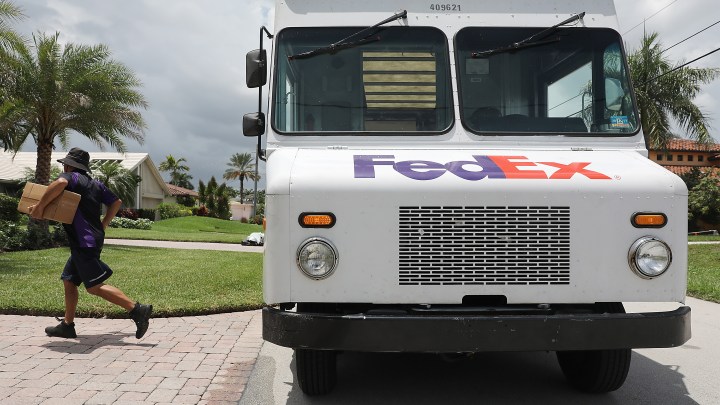
If you think delivery trucks contribute to road congestion now … just wait
If you think delivery trucks contribute to road congestion now … just wait

Amazon will once again allow third-party retailers to use FedEx after banning them from using its ground delivery service over the holidays.
The on-again, off-again relationship between the two companies highlights the ongoing “last mile” challenge for retailers in getting packages to our doors — and in competing with each other to do it ever faster.
Every time we click “buy,” a chain of events is set into motion, often involving a distant warehouse, maybe a plane and definitely a truck or two.
The vlogger who goes by LunatiKz documented a day in his life as a FedEx ground driver on his YouTube channel. It involves a lot of truck engine starting and stopping.
A World Economic Forum report estimates there will be over one-third more delivery vehicles on the roads by 2030, delivering 78% more packages, which means more emissions … and more double parking. A lot of that is hidden to us as consumers.
“The awareness is probably not that high, yet, although people who live in cities certainly have noticed more traffic, more parked vehicles,” said Denise Dahlhoff, senior researcher at the Conference Board.
And it’s only going to get worse.
“If you already feel the difference in the last couple of years, imagine almost 80% growth in the next ten years. That’s a number that was very alarming to us,” said Richa Sahay, one of the authors of the WEF report. “Which would also lead to 11 minutes increase in time in your daily commute.”
And an extra 6 million tons of CO2 emissions. Anne Goodchild, professor of civil and environmental engineering at the University of Washington, said there are ways in which deliveries could be greener.
“A delivery vehicle can consolidate, like a bus, many packages or many orders of groceries into one vehicle,” she said.
But for that to work, we might have to give up our two-day delivery habit. The World Economic Forum also suggests nighttime deliveries, a switch to electric trucks and the increased use of parcel lockers in central locations.
There’s a lot happening in the world. Through it all, Marketplace is here for you.
You rely on Marketplace to break down the world’s events and tell you how it affects you in a fact-based, approachable way. We rely on your financial support to keep making that possible.
Your donation today powers the independent journalism that you rely on. For just $5/month, you can help sustain Marketplace so we can keep reporting on the things that matter to you.


















